
Official Edgar Rice Burroughs Tribute and Weekly Webzine Site Since 1996 ~ Over 15,000 Web Pages in Archive Presents Volume 5869 |

Official Edgar Rice Burroughs Tribute and Weekly Webzine Site Since 1996 ~ Over 15,000 Web Pages in Archive Presents Volume 5869 |

Eclectica Archive |

ECLECTICA v.2017.02 |

Eclectica Archive |
|
Coldwater, Michigan Hosted by: Michael A. Hatt Aug 3 thru 5, 2017  |
"Alan Fedupwithitall" posted this news on my ERBzine Facebook Group on 2017.07.12:
Word came from Drew Ford this morning that Golden Age artist SAM GLANZMAN has passed away. His work included the first three of the four issues of "Jungle Tales of Tarzan" published by Charlton in the 60s, but his enduring legacy will be the work he did on several war comics for multiple publishers like DC, Dell and Charlton. Last year saw the publication of "U.S.S. Stevens" - collecting all of the short pieces that he wrote, drew and published mainly in "Our Army at War" in the 70s -- including a new piece he had drawn in 2015. He wrote and drew a two-volume autobiographical work, "A Sailor's Story," for Marvel back in the 80s which was recently collected in a single volume by Dover. A GoFundMe page had recently been opened by Ford (his friend and editor) to create a tribute book for Sam, as well as to help his family with ballooning medical costs -- https://www.gofundme.com/samglanzman
 |
 |
 |
 |
| Charlton Comics entered the Burroughs market when they issued
Jungle
Tales of Tarzan #1 (December 1964). Charlton's Tarzan effort, edited
by Pat Masulli and based on three stories, Capture of Tarzan, The Fight
for the Balu, and Tarzan's Way of Life, allowed to slip into the public
domain, shook Gold Key. In Charlton's first issue, Masulli stated, "the
true flavor of Tarzan as created by Mr. Burroughs has rarely been tasted
in comic books. We intend to change that. We intend to be as true to the
original as possible. We pledge ourselves to a series of comics that will
thrill and inspire, delight and entrance as did the original masterworks."
Jungle Tales of Tarzan reportedly sold well enough to justify its continued existence. The creative team of Masulli, Sam Glanzman, and Joe Gill, kept their pledge to the readers. However, even though the stories Sam Glanzman drew and Joe Gill adapted were free of copyright, Western Publishing and Edgar Rice Burroughs, Inc., argued that Tarzan was still a trademark. Jungle Tales of Tarzan folded after only four issues. |
|
|

A Military Tribute:
OF ONE WHO SERVED
By John Martin
A Veterans Day salute to ERB,
Well past the age to go to war,
And yet he found a way to serve,
Enlisting in the "writer's corps."
Correspondents all were screened,
Their histories were all laid
bare,
They wore a rankless uniform,
A symbol of their status there.
They absolved the War Department
Of all liabilities,
Should they die or suffer wounds
Because of the hostilities.
Ed was in his middle 60s
When he saw the Pearl attack,
Right away he strove to help
His USA in fighting back.
He joined the local men who formed
A group to guard Hawaii's shore,
And wrote some columns, "Laugh
It Off,"
To help folks learn to smile
once more.
But he really yearned to get
To the action and the stress,
And so he got accreditation
As a member of the Press.
He was the oldest correspondent
In the whole Pacific war,
And the honor of his service
Is saluted, evermore.
...And a salute to all others
who have served, as well!
![]()


Clampett on Mars (Production Cell from the White's ERB
Collection)
From the John Carter of Mars Animation Project by
John Coleman Burroughs and Bob Clampet
See JCB's Rare Project Folio:
![]()
El Caballero Souvenir Booklet
~
Tarzana Ranch Photos with Art
by Studley O. Burroughs
Introduction and Overview
(Go to ERBzine 1092
and 1093 for full-page
scans)
Many years back, Danton Burroughs and I scanned this
rare booklet for release on our Websites.
The Web was slower then so we released the scans in
small low res images.
I've updated these three pages with larger images:
ERBzine 1092 and 1093
On the day after Dan's
Memorial in Tarzana, his friend Ralph Herman
spent a day showing me around what was left of the
Tarzana Ranch grounds and
then took me on a golf cart tour of the El Cab after
which
we dined in their exclusive Members Dining Room.
Quite a change now from the images shown in this old
booklet.
More about Tarzana in our companion site:
www.tarzana.ca

Hi Bill, |




|
|
 |
The book opens with a foreword by actor Caper Van Dien, who starred as the 20th Tarzan in Tarzan and the Lost City (1998) and credits himself as “the only Tarzan who can say he rode on an actual African elephant in a Tarzan film.” Griffin then provides a brief overview of how the character's “fortunes have ebbed and flowed over the past century” in his introductory essay “Whither the Ape Man?” Tarzan first appeared on the pages of All-Story Magazine in October 1912, where the novel Tarzan of the Apes was serialized before being collected and published in a book in 1914. The next step on Tarzan's journey to becoming the King of All Media was the release of the 1918 silent film of the same name starring Elmo Lincoln, as the first adult Tarzan. Nearly 50 years later, the character made his way to the small screen with Tarzan, which ran for two seasons from 1966-68 and starred Ron Ely. Lou Scheimer of Filmation turned Tarzan (voiced by Robert Ridgely) into a Saturday morning star with the animated Tarzan, Lord of the Jungle, which aired 1976-84. The book concludes with two titles from 2016, The Legend of Tarzan film and and the Netflix animated series Tarzan and Jane. Griffin highlights each project with at least a page that presents a brief synopsis of the plot along with details about the movie, ranging from pre-production dealings to the public's response. Tarzan Escapes (1936) is examined further as a possible “cursed production” because “the mishaps...were so numerous,” such as Maureen O'Sullivan's troubles with lions and the death of co-star John Buckler. The book is 10.3 x 13.1 inches, a good size to appreciate the films' posters, each of which gets its own page. The book also highlights the actors, both famous and obscure, who played Tarzan and Jane with biographies and photos. And even Cheeta gets a page. Tarzan on Film is great resource, highly recommended for fans of Burroughs' character as well as those with an interest in Hollywood history. |
On filming "The Romance of Tarzan" in 1918: "(Producer William) Parsons built nine sets on the National Film stages, including a saloon 138 feet long, with a staircase on which Tarzan fights a band of assailants, and a giant 60' x 20' tank, 12 feet deep, adorned with a waterfall and filled with 40 residents of the Los Angeles Alligator Farm." (Scott Tracy Griffin's "Tarzan on Film", page 14) See the sets in ERBzine.
|
King Kong (1933) Uncut Press Book (20 pages)

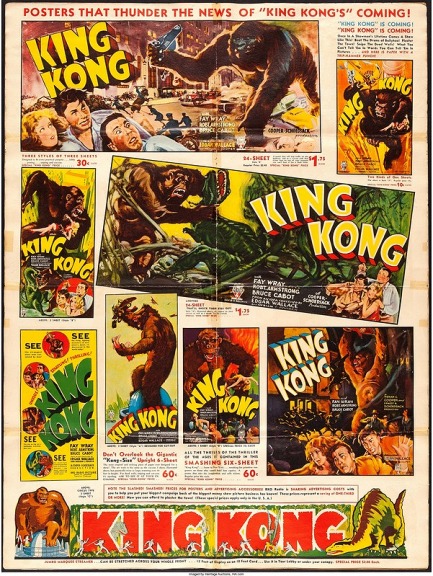

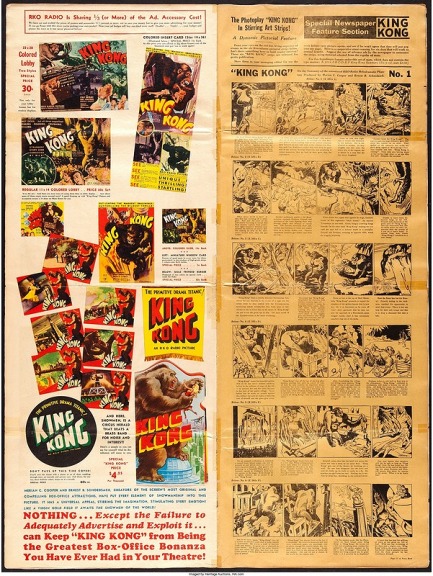
Ref: The Ernesto Collection
![]()

King Kong Comic
The 1970 British edition published by Top Sellers
![]()


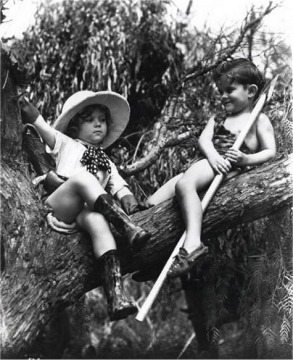
Shirley Temple in Tarzan of the Apes
Submitted by Ron de Laat and Rob Donkers
![]()
A Close Friend of the Burroughs Family
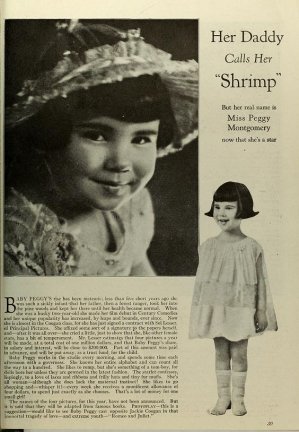
![]()

Click for full size
Bill Feret's 17½”x23” Poster History of the Cliffhanger Serial
offered for $300 on eBay.
|
|

Although reviews of the new Tarzan film, The Legend of Tarzan, have been mixed, most have united around a single theme: that it is racist (one deemed it more racist than the infamous Birth of A Nation from 1915, which was sympathetic to the lynchings visited on blacks by the post Civil War Klan). Not to be outdone, Castro sympathizer Harry Belafonte has declared Tarzan to be the “most racist” character “in history.” Many have even questioned why anyone would make a film in the age of Obama about a character created in the “white man’s burden” atmosphere of 1912. |
|
|
|

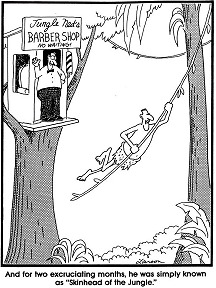

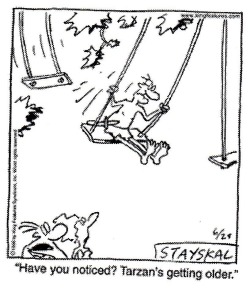




![]()

![]()
BILL
HILLMAN
Visit
our thousands of other sites at:
BILL
AND SUE-ON HILLMAN ECLECTIC STUDIO
ERB
Text, ERB Images and Tarzan® are ©Edgar Rice Burroughs, Inc.-
All Rights Reserved.
All
Original Work ©1996-2017 by Bill Hillman and/or Contributing Authors/Owners
No
part of this web site may be reproduced without permission from the respective
owners.